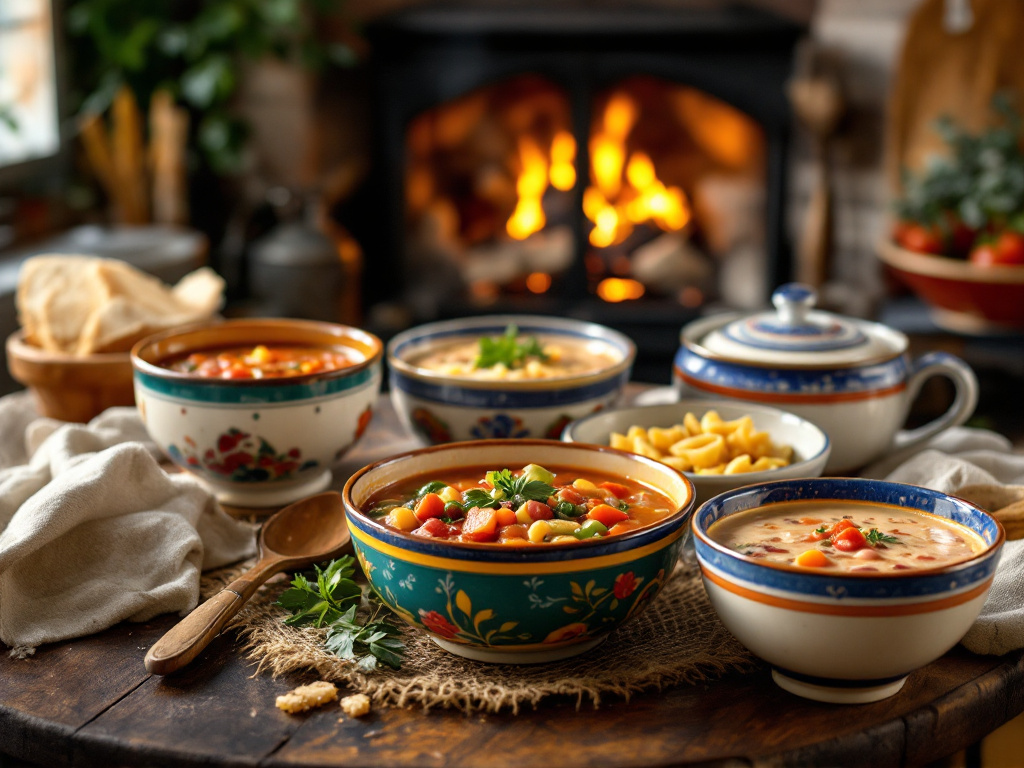Introduction
Italian cuisine is renowned worldwide for its rich flavors, diverse ingredients, and comforting dishes. Among the many culinary delights Italy offers, soups hold a special place. These hearty and nourishing dishes are more than just a meal; they are a testament to Italy’s culinary heritage and regional diversity. Let’s explore the fascinating world of Italian soups, focusing on Italy’s most famous soup, Minestrone, and understand why they are cherished globally.
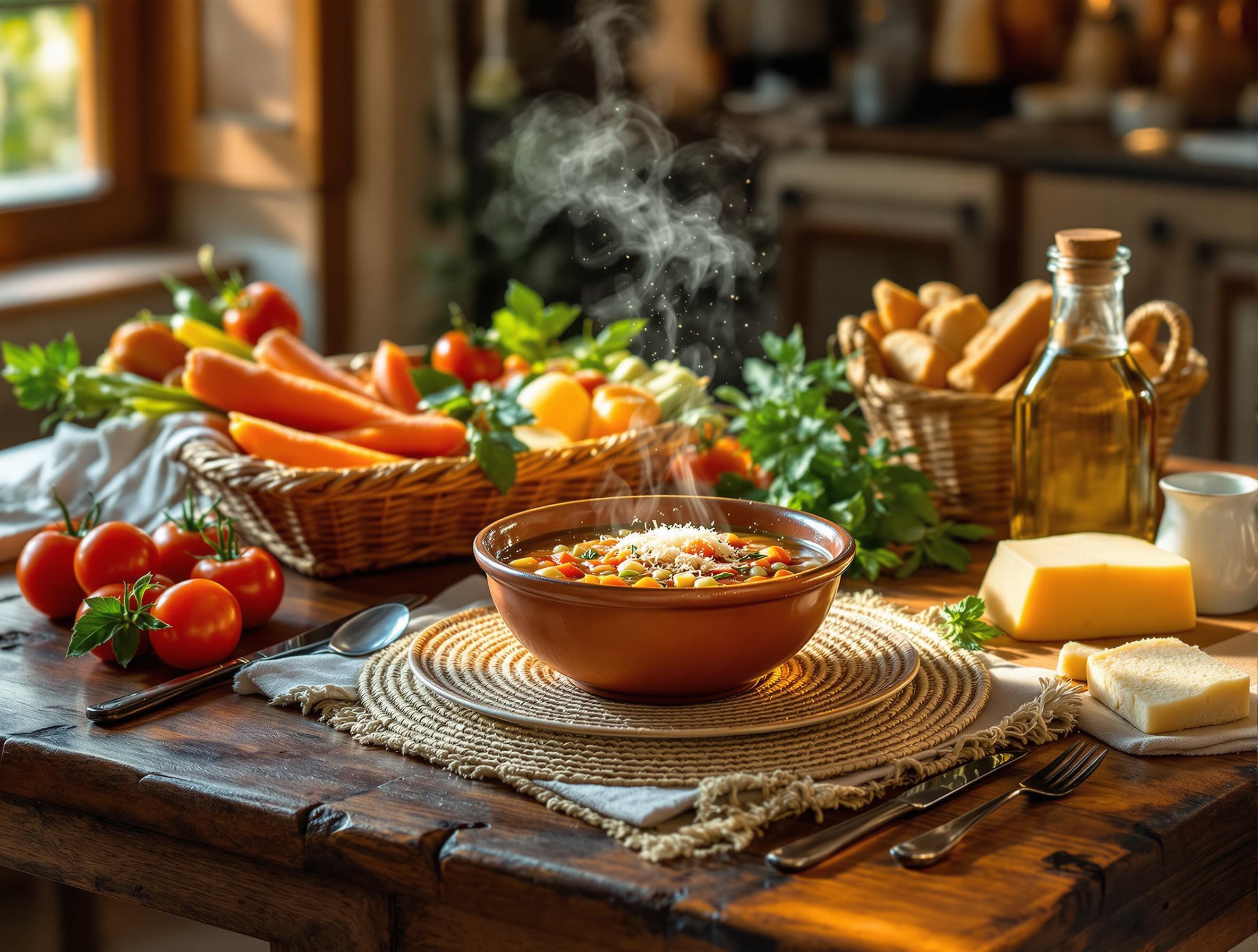
Historical Context of Italy’s Most Famous Soup
The origins of Italian soups date back centuries, evolving from the need to utilize leftovers and make the most of available ingredients. In the largely peasant population of Italy, soups became a staple due to their affordability and nutritional value. The technique of boiling stock allowed for the consumption of hard vegetables and introduced new flavors, making soups an integral part of Italian cuisine. The term “zuppa” and its variations like “soup,” “sopa,” and “soupe” derive from the Frankish word “suppa,” which refers to a bowl of vegetable or meat stock with chunks of bread.
Soups represent one of the oldest cooking techniques, incorporating unused or leftover food. This tradition is beautifully depicted in the famous painting “Il mangiafagioli” (The Bean Eater) by Annibale Carracci, showcasing a humble peasant enjoying a bowl of pasta e fagioli. For a deeper dive into the history of Italy’s most famous soup, you can refer to resources like Chef’s Pencil, which provides insights into the evolution of these dishes.
Italy’s most famous soup has long been a part of the country’s culinary landscape, with each region contributing its unique recipes and flavors. The diversity of Italian soups is a reflection of the country’s rich history and the ingenuity of its people in creating delicious meals from simple ingredients. The tradition of making soup has been passed down through generations, with families often having their own secret recipes that have been perfected over time.
The cultural significance of Italy’s most famous soup cannot be overstated. They are a staple of Italian family meals, often served as the primo piatto, or first course, before the main dish. Soups are also a common feature of Italian celebrations and festivals, where they are enjoyed by families and friends alike. The communal aspect of sharing a bowl of soup is an important part of Italian culture, and it is a tradition that continues to be cherished today.
Regional Variations of Italy’s Most Famous Soup
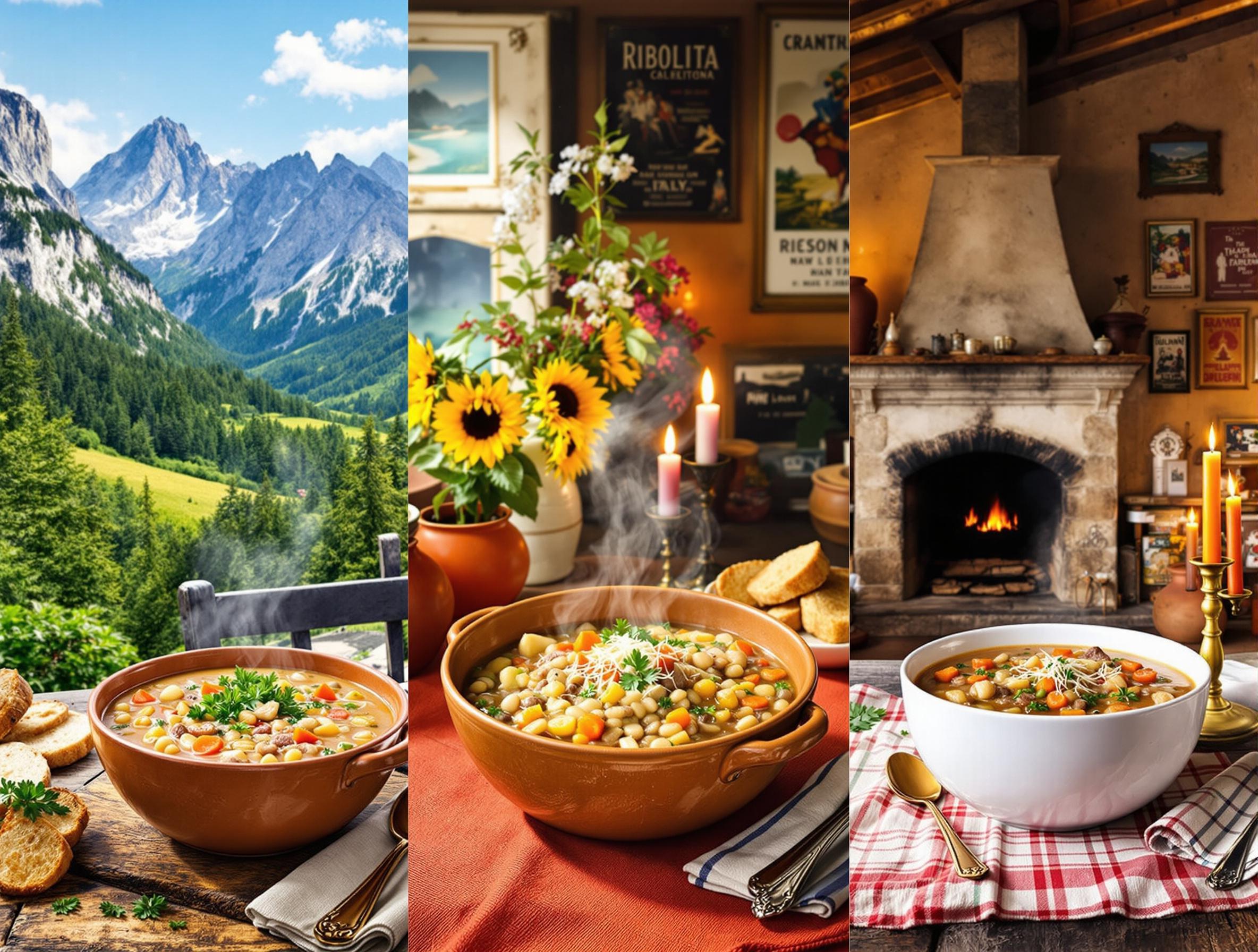
Italy’s diverse geography and climate have significantly influenced its soup traditions. Each region boasts unique soup recipes, reflecting local ingredients and culinary practices. Here are some notable regional variations:
-
Northern Italy: Soups like Minestra d’orzo (barley soup) from Alto Adige showcase Austro-Hungarian influences, featuring pearl barley, meat stock, and a mirepoix of vegetables. This hearty soup is often served with savory fritters filled with spinach and ricotta cheese, making it a popular dish in the idyllic mountain region.
-
Central Italy: Tuscany is famous for its Ribollita, a hearty soup made with bread, vegetables, and beans, exemplifying the region’s cucina povera culture. This soup is a testament to the Tuscan tradition of making the most of stale bread and garden vegetables, resulting in a comforting and nourishing dish.
-
Southern Italy: In Campania, the Minestra maritata combines meat and vegetables, resulting in a rich and chunky soup that has been a staple for centuries. This soup is a prime example of the region’s cucina povera tradition, which focuses on using simple and affordable ingredients to create delicious meals.
For more insights into regional Italian cuisine, you can explore resources like Wikipedia’s list of Italian soups, which highlights the diverse soup traditions across Italy. The regional variations of Italy’s most famous soup are a testament to the country’s culinary diversity and the importance of local ingredients and traditions in shaping its food culture.
Minestrone: Italy’s Most Famous Soup
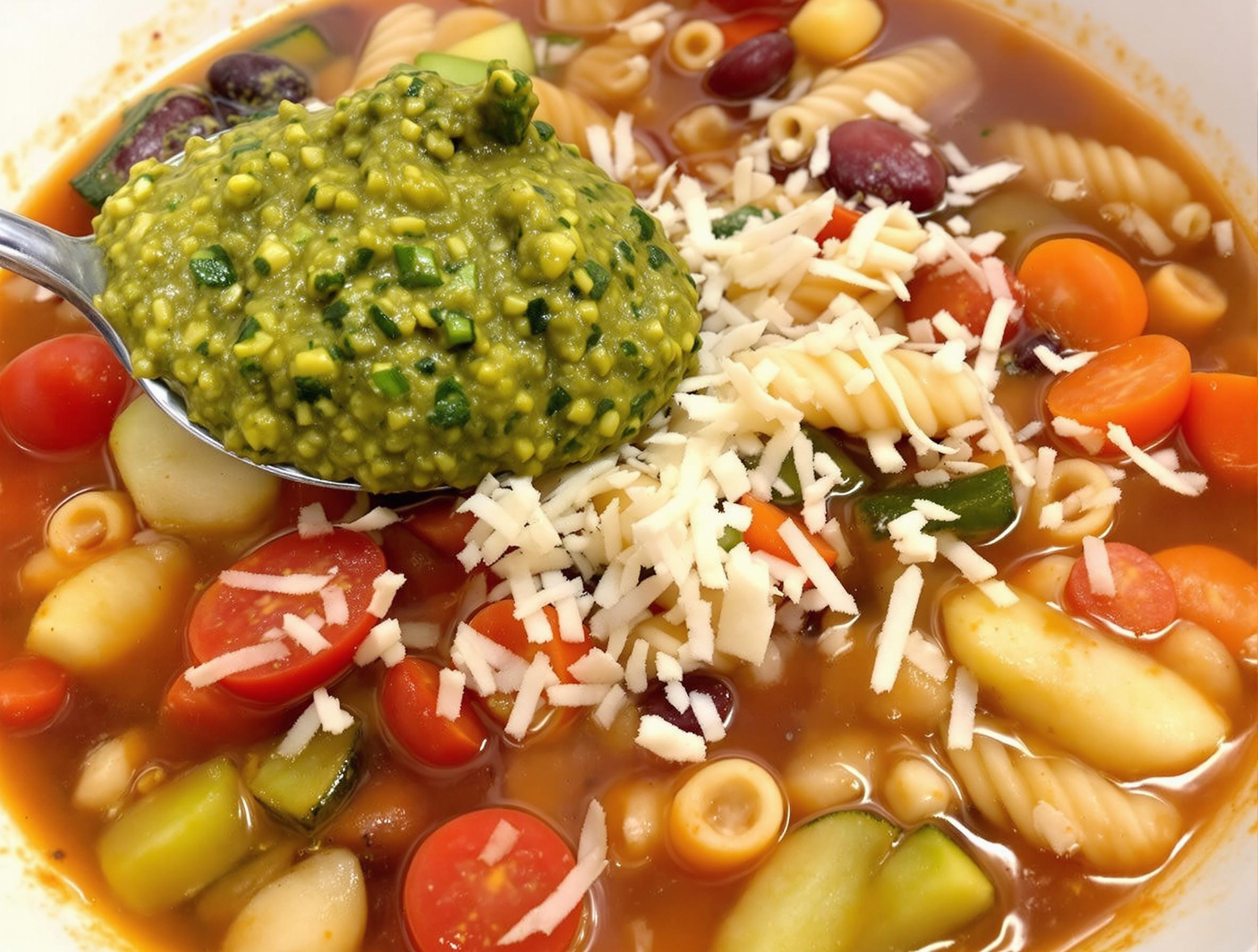
Minestrone is undoubtedly Italy’s most famous soup, known for its hearty and comforting nature. This vegetable-based soup is a celebration of seasonal produce, featuring a variety of ingredients like carrots, peas, potatoes, and beans. The name Minestrone translates to “big soup,” reflecting its generous portions and rich flavors.
The preparation of Minestrone varies by region, with each area adding its unique touch. In Liguria, for example, Minestrone is often served with a spoonful of pesto, enhancing its flavor profile. The soup is typically bolstered with ingredients like extra virgin olive oil, Parmesan cheese, and sometimes pasta or rice, making it a complete meal.
Minestrone‘s popularity lies in its versatility and the way it showcases Italy’s culinary heritage. It is a testament to the country’s ability to create delicious and nourishing dishes from simple, readily available ingredients. The soup is also known for its health benefits, as it is packed with vitamins and minerals from the various vegetables used in its preparation.
The history of Minestrone can be traced back to ancient Roman times, where it was a staple of the peasant diet. The soup was a way to use up leftover vegetables and make the most of available ingredients. Over time, Minestrone has evolved to include a wider variety of ingredients and has become a symbol of Italian cuisine.
Today, Minestrone is enjoyed not only in Italy but also around the world. Its hearty and comforting nature makes it a popular choice for a warm and satisfying meal, especially during the colder months. The soup’s versatility also makes it a great option for vegetarians and vegans, as it can be easily adapted to suit different dietary preferences.
Other Popular Italian Soups
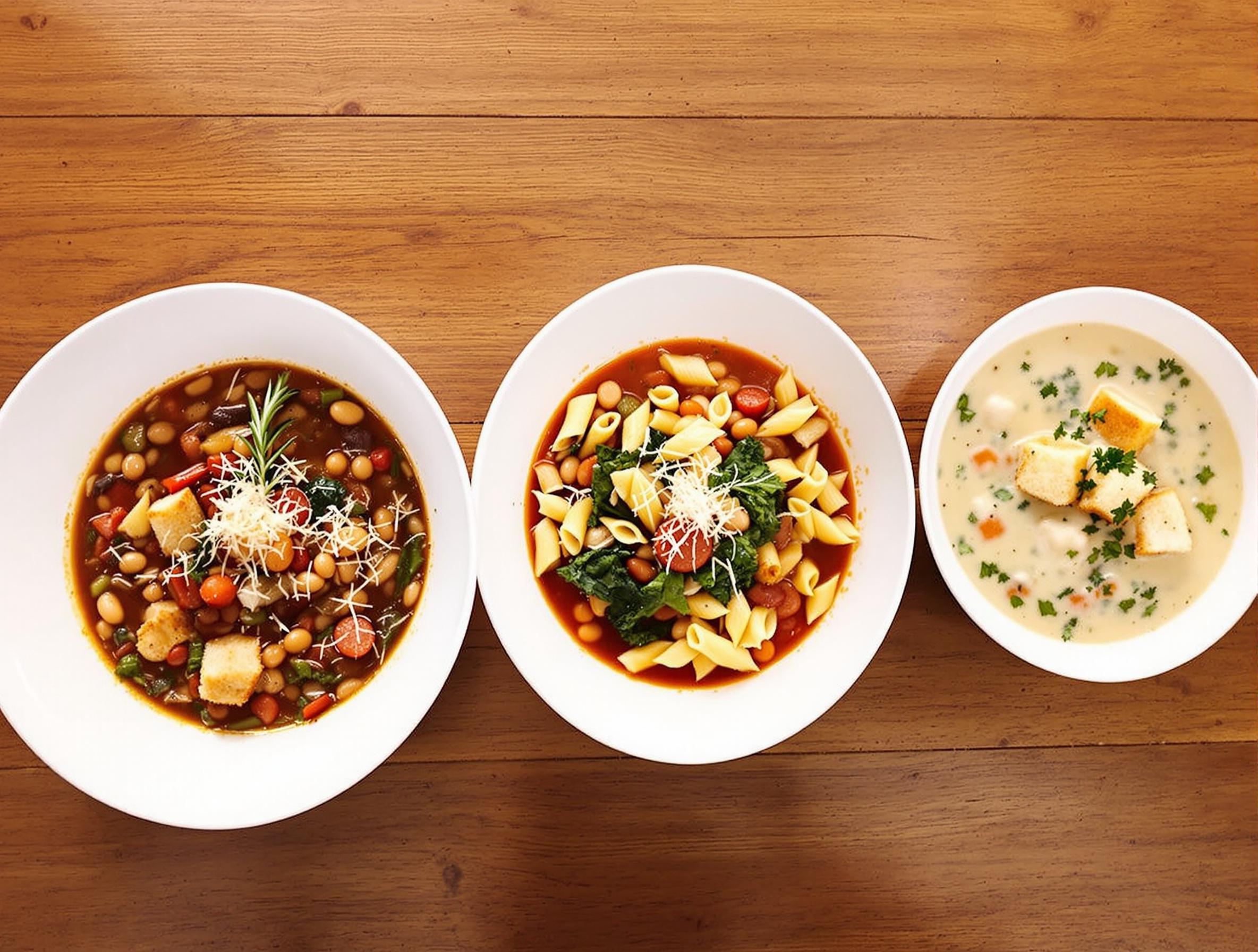
While Minestrone is Italy’s most famous soup, several other Italian soups deserve recognition:
-
Ribollita: This Tuscan soup is made with bread, vegetables, and beans, offering a hearty and comforting meal perfect for colder months. The name Ribollita translates to “reboiled,” reflecting the traditional practice of reheating the soup to enhance its flavors. The soup is a testament to the Tuscan tradition of making the most of stale bread and garden vegetables, resulting in a comforting and nourishing dish.
-
Pasta e Fagioli: A humble yet flavorful dish featuring pasta and beans, showcasing the richness of Italian cuisine. The soup is a staple of Italian family meals and is often served as the primo piatto, or first course, before the main dish. Pasta e Fagioli is a hearty and satisfying soup that is perfect for a comforting meal on a cold day.
-
Zuppa Toscana: A creamy soup with Italian sausage, kale, and potatoes, known for its rich and comforting flavors. The soup is a popular choice for a warm and satisfying meal, especially during the colder months. Zuppa Toscana is a hearty and filling soup that is perfect for a comforting meal on a cold day.
These soups, along with others like Pappa al Pomodoro and Zuppa Imperiale, highlight the diversity and richness of Italian soup traditions. Each soup has its unique flavors and ingredients, reflecting the culinary heritage and regional diversity of Italy.
Cultural Significance and Modern Influence of Italy’s Most Famous Soup
Italy’s most famous soup holds significant cultural importance, often served during family gatherings and celebrations. They embody the principles of cucina povera, focusing on simplicity, affordability, and minimal waste. Today, Italy’s most famous soup continues to influence global cuisine, with chefs worldwide incorporating these traditional recipes into modern dishes.
The evolution of Italy’s most famous soup reflects the country’s culinary journey, adapting to changing tastes and ingredients while preserving their core traditions. Modern adaptations often include innovative twists, such as using different types of pasta or incorporating contemporary cooking techniques.
The cultural significance of Italy’s most famous soup is evident in their role in Italian family meals and celebrations. Soups are often served as the primo piatto, or first course, before the main dish, and are a common feature of Italian festivals and gatherings. The communal aspect of sharing a bowl of soup is an important part of Italian culture, and it is a tradition that continues to be cherished today.
Italy’s most famous soup has also gained popularity outside of Italy, with many restaurants around the world featuring them on their menus. The global influence of Italy’s most famous soup is a testament to their delicious flavors and the rich culinary heritage they represent.
FAQs
-
What are the key ingredients in Minestrone? Minestrone typically includes a variety of seasonal vegetables like carrots, peas, potatoes, and beans, along with extra virgin olive oil and sometimes pasta or rice. The soup’s versatility allows for the inclusion of various ingredients, making it a popular choice for a hearty and satisfying meal.
-
How do regional variations affect the taste and preparation of Italy’s most famous soup? Regional variations in Italian soups reflect local ingredients and culinary practices, resulting in unique flavors and preparation methods. For example, Minestrone in Liguria is often served with a spoonful of pesto, while Ribollita in Tuscany is made with stale bread and garden vegetables. These regional variations highlight the culinary diversity and rich heritage of Italy’s most famous soup.
-
What is the cultural significance of soups in Italian cuisine? Soups in Italian cuisine embody the principles of cucina povera, focusing on simplicity, affordability, and minimal waste. They are often served during family gatherings and celebrations, reflecting the communal aspect of Italian culture. Soups are also a common feature of Italian festivals and gatherings, where they are enjoyed by families and friends alike.
-
How have Italian soups evolved over time? Italian soups have evolved to adapt to changing tastes and ingredients while preserving their core traditions. Modern adaptations often include innovative twists, such as using different types of pasta or incorporating contemporary cooking techniques. The evolution of Italian soups reflects the country’s culinary journey and the importance of local ingredients and traditions in shaping its food culture.
-
What are some modern twists on traditional Italian soup recipes? Modern twists on Italian soup recipes include using different types of pasta, incorporating contemporary cooking techniques, and experimenting with new ingredients. For example, some modern recipes may use quinoa or farro instead of traditional pasta, or incorporate ingredients like kale or sweet potatoes for a unique twist on classic soups.
Conclusion
Italy’s most famous soup, with its rich history and diverse regional variations, continues to captivate food enthusiasts worldwide. Whether it’s the iconic Minestrone or other popular soups like Ribollita and Pasta e Fagioli, these dishes embody the essence of Italian cuisine: simplicity, flavor, and a deep respect for tradition. The cultural significance of Italy’s most famous soup is evident in their role in family meals and celebrations, reflecting the communal aspect of Italian culture.
The evolution of Italy’s most famous soup reflects the country’s culinary journey, adapting to changing tastes and ingredients while preserving their core traditions. Modern adaptations often include innovative twists, such as using different types of pasta or incorporating contemporary cooking techniques. The global influence of Italy’s most famous soup is a testament to their delicious flavors and the rich culinary heritage they represent.
Italy’s most famous soup is more than just a meal; it is a testament to Italy’s culinary heritage and regional diversity. From the hearty and comforting Minestrone to the rich and flavorful Zuppa Toscana, these soups showcase the diversity and richness of Italian soup traditions. Whether enjoyed in Italy or around the world, Italy’s most famous soup continues to be a beloved and cherished part of the country’s culinary landscape.
For those interested in exploring more Italian-inspired recipes, you might enjoy our Italian Penicillin Soup Recipe or delve into a comprehensive guide with our Mastering the Ultimate Pastina Soup Recipe. These resources offer a deeper insight into the world of Italian soups and their enduring appeal.
